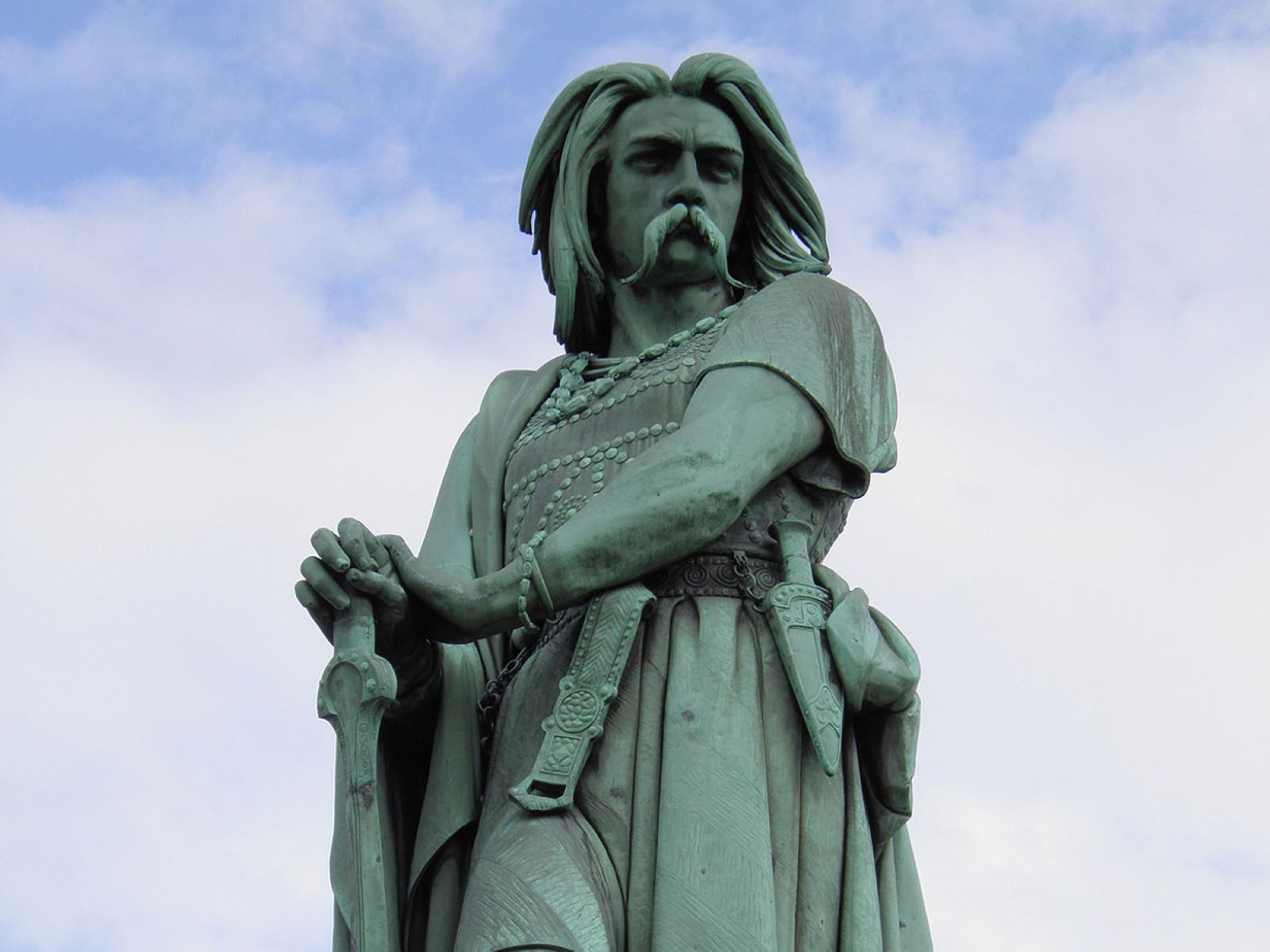
Who was Vercingetorix? Vercingetorix, a name that might twist your tongue, was a legendary Gallic chieftain who stood up to the mighty Roman Empire. Born around 82 BC, he became a symbol of resistance and unity for the Gallic tribes. Why is Vercingetorix important? He is best known for leading a massive revolt against Julius Caesar during the Gallic Wars. Despite his eventual defeat at the Battle of Alesia in 52 BC, Vercingetorix's courage and leadership left a lasting impact on history. What can we learn from Vercingetorix? His story teaches us about bravery, strategy, and the power of unity in the face of overwhelming odds. Ready to dive into 35 fascinating facts about this iconic figure? Let's get started!
Key Takeaways:
- Vercingetorix, a brave Gallic chieftain, led a doomed revolt against the Roman Empire. Despite his surrender, his legacy endures as a symbol of resistance and national pride in French culture.
- Vercingetorix's tactics and strategies during the Gallic Wars influenced later military leaders and continue to inspire modern culture, including movies, video games, and even French school curriculum.
Who Was Vercingetorix?
Vercingetorix, a name that echoes through history, was a Gallic chieftain who led a brave but ultimately doomed revolt against Roman rule. His story is one of courage, strategy, and a fierce desire for freedom.
- Vercingetorix was born around 82 BC in the Arverni tribe, located in what is now modern-day France.
- His name means "victor of a hundred battles" in the Gaulish language.
- He united various Gallic tribes to form a coalition against the Roman Empire.
- Vercingetorix's father, Celtillus, was also a chieftain but was executed for attempting to become king of all Gauls.
- He is often compared to other great military leaders like Hannibal and Spartacus.
The Revolt Against Rome
Vercingetorix's revolt against Rome is one of the most famous uprisings in ancient history. His tactics and strategies were both innovative and daring.
- The revolt began in 52 BC, during the Gallic Wars led by Julius Caesar.
- Vercingetorix used scorched-earth tactics, burning villages and crops to starve the Roman legions.
- He fortified the city of Alesia, making it a stronghold against Roman attacks.
- Despite initial successes, his forces were eventually surrounded by Caesar's legions.
- The Siege of Alesia is considered one of the greatest military engagements of ancient times.
The Siege of Alesia
The Siege of Alesia was the climax of Vercingetorix's rebellion. This battle showcased his leadership and strategic mind, even in the face of overwhelming odds.
- The siege lasted for about a month, from September to October 52 BC.
- Vercingetorix had around 80,000 troops inside Alesia, while Caesar commanded about 60,000.
- Caesar built two walls around Alesia: an inner wall to keep Vercingetorix's forces in and an outer wall to keep reinforcements out.
- Despite being outnumbered, Vercingetorix managed to send out cavalry to seek help from other Gallic tribes.
- Reinforcements did arrive, but they were unable to break through Caesar's fortifications.
Vercingetorix's Surrender
After the failure of the reinforcements to break the siege, Vercingetorix made a fateful decision that would seal his fate.
- He surrendered to Julius Caesar in October 52 BC.
- According to historical accounts, Vercingetorix rode out of Alesia in full armor and laid his weapons at Caesar's feet.
- His surrender marked the end of major Gallic resistance to Roman rule.
- Vercingetorix was taken to Rome as a prisoner.
- He was paraded through the streets of Rome during Caesar's triumph in 46 BC.
The Legacy of Vercingetorix
Though his rebellion failed, Vercingetorix's legacy has endured through the centuries. He remains a symbol of resistance and national pride.
- Vercingetorix was executed in 46 BC, likely by strangulation, after being held captive for six years.
- His story was largely forgotten until the 19th century when he became a symbol of French nationalism.
- Napoleon III commissioned a statue of Vercingetorix in 1865, which stands in Alesia today.
- He is often depicted with long hair and a mustache, typical of Gallic warriors.
- Vercingetorix is celebrated in French literature, art, and popular culture.
Interesting Tidbits
Beyond the well-known facts, there are some lesser-known but equally fascinating details about Vercingetorix and his time.
- The exact location of Alesia was debated for centuries until archaeological evidence confirmed it in the 19th century.
- Vercingetorix's tactics influenced later military leaders, including guerrilla warfare strategies.
- He is mentioned in Julius Caesar's "Commentarii de Bello Gallico," providing a Roman perspective on the Gallic Wars.
- Vercingetorix's rebellion inspired other uprisings in Roman-occupied territories.
- His name and story have been used in various films, books, and video games.
Vercingetorix in Modern Culture
Vercingetorix's influence extends beyond history books; he has made his mark in modern culture as well.
- He appears as a character in the popular comic book series "Asterix."
- Several movies have been made about his life, including the 2001 film "Druids."
- Vercingetorix is a playable character in the video game "Total War: Rome II."
- His story is taught in French schools as part of the national curriculum.
- Vercingetorix remains a symbol of resistance and unity, inspiring people to this day.
Vercingetorix's Legacy
Vercingetorix's story is a testament to the resilience and bravery of the Gauls. His leadership during the Gallic Wars, especially at the Battle of Alesia, showcased his strategic genius. Despite his eventual defeat and execution by Julius Caesar, Vercingetorix remains a symbol of resistance against oppression. His legacy lives on in French history and culture, inspiring countless stories, books, and films. Understanding Vercingetorix's life gives us a glimpse into the complexities of ancient warfare and the indomitable spirit of those who fought for their freedom. His name, though often overshadowed by Caesar, deserves recognition and respect. So next time you think of great historical leaders, remember Vercingetorix and his unwavering fight for his people.
Frequently Asked Questions
Was this page helpful?
Our commitment to delivering trustworthy and engaging content is at the heart of what we do. Each fact on our site is contributed by real users like you, bringing a wealth of diverse insights and information. To ensure the highest standards of accuracy and reliability, our dedicated editors meticulously review each submission. This process guarantees that the facts we share are not only fascinating but also credible. Trust in our commitment to quality and authenticity as you explore and learn with us.


